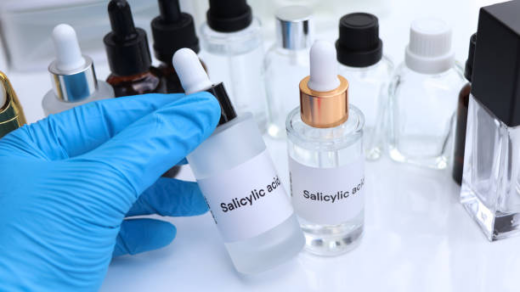Are you considering adding retinol to your skincare routine? If so, you’re making a savvy choice, but it’s essential to understand how to incorporate it properly. Retinol is a powerful ingredient known for its anti-aging benefits, but incorrect usage can lead to irritation and adverse effects. This article will guide you through everything you need to know before making retinol a staple in your skincare regimen.
What is Retinol?

Retinol is a derivative of Vitamin A and is widely acclaimed in the skincare industry for its effectiveness in treating a variety of skin concerns. From reducing the appearance of fine lines and wrinkles to improving skin texture and tone, retinol offers numerous benefits. It works by accelerating cell turnover and stimulating collagen production, resulting in fresher, more youthful skin.
While retinol can be beneficial, it’s important to note that it is potent and can cause irritation if not used correctly. This makes understanding the basics of retinol crucial before diving in.
Benefits of Using Retinol
One of the main benefits of retinol is its ability to reduce visible signs of aging. By promoting cell renewal and collagen production, retinol helps to diminish fine lines and wrinkles. It also assists in evening out skin tone and fading hyperpigmentation, making it a versatile addition to any skincare routine.
Besides its anti-aging properties, retinol is effective in treating acne. Its exfoliating action helps to unclog pores, reducing the occurrence of breakouts. Furthermore, retinol improves skin texture, giving it a smoother and more refined appearance.
Here are some key benefits of using retinol:
- Improves skin tone and texture
- Reduces fine lines and wrinkles
- Stimulates collagen production
- Treats acne and prevents breakouts
- Fades hyperpigmentation and dark spots
How to Incorporate Retinol into Your Routine
When adding retinol to your skincare routine, it’s crucial to start slowly to avoid irritation. Begin by using a low concentration of retinol, such as 0.25%, and apply it once or twice a week. Gradually increase frequency as your skin builds tolerance. Always apply retinol at night, as it can make your skin more sensitive to sunlight.
Follow these steps to incorporate retinol into your routine:
- Cleanse your face thoroughly
- Apply a small amount of retinol to your face and neck
- Wait a few minutes to allow the product to absorb
- Moisturize to minimize potential dryness and irritation
- Always use sunscreen during the day when using retinol
Additionally, avoid using other potent active ingredients such as AHAs, BHAs, and Vitamin C on the same nights as retinol, as this can increase the risk of irritation.
Common Side Effects and How to Manage Them
It’s not uncommon to experience side effects when you first start using retinol. These can include redness, dryness, flaking, and a temporary increase in acne. Don’t be discouraged by these initial reactions; they are often part of the process as your skin adjusts to the new ingredient.
To manage these side effects, consider applying retinol over a moisturizer to buffer the skin. Use a gentle cleanser and stay away from harsh exfoliants. Hydrating and soothing ingredients like hyaluronic acid and ceramides can also help mitigate discomfort.
If the irritation persists, reduce the frequency of application or consult a dermatologist for personalized advice.
When to Expect Results
Patience is key when it comes to seeing results from retinol. While some improvements may be visible within a few weeks, it often takes several months of consistent use to achieve significant changes. Be diligent and stick with your routine; the benefits of retinol are well worth the wait.
Tracking your progress with photos or a skincare journal can help you see the cumulative effects over time. Remember, desirable outcomes such as reduced wrinkles, smoother texture, and more even skin tone are gradual but achievable with persistent use.
Conclusion
Retinol can be a game-changer in your skincare routine if used correctly. Its benefits range from anti-aging and improving skin texture to treating acne and fading hyperpigmentation. Start slow, be mindful of potential side effects, and remain patient as you wait for results. By following these guidelines, you can harness the power of retinol for radiant, youthful skin.
FAQs
1. Can I use retinol if I have sensitive skin?
Yes, but it is advisable to start with a lower concentration and build up gradually. Always perform a patch test and consult with a dermatologist for personalized advice.
2. How often should I apply retinol when first starting?
Begin by applying retinol once or twice a week. Gradually increase the frequency as your skin builds tolerance, eventually using it every other night if your skin tolerates it well.
3. Can I use retinol with other active ingredients?
It is best to avoid using other potent active ingredients like AHAs, BHAs, and Vitamin C on the same nights as retinol. This will minimize the risk of irritation.
4. Is it necessary to use sunscreen when using retinol?
Absolutely. Retinol can make your skin more sensitive to the sun, so using a sunscreen with at least SPF 30 during the day is crucial to protect your skin and achieve the best results.
5. What should I do if I experience severe irritation?
If you experience severe irritation, reduce the frequency of retinol or stop using it temporarily. Consider applying it over a moisturizer or consult a dermatologist for further advice.



